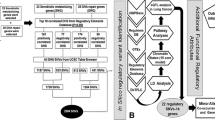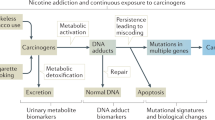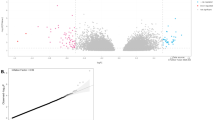Abstract
Epidemiological studies have demonstrated that it is possible to prevent lung cancer and other smoke-related diseases by avoiding exposures to tobacco smoke. A complementary strategy is chemoprevention, which is based on the administration of dietary and pharmacological agents, which is addressed to (a) addicted active smokers, who are unable to quit smoking, (b) ex-smokers, who are still at risk for several years, and (c) involuntary smokers, including passively exposed individuals as well as transplacentally exposed individuals. The biological effects of cigarette smoke (CS) as a complex mixture, either mainstream (MCS) or sidestream (SCS) or environmental (ECS), have been poorly explored. We showed that MCS and ECS induce a broad variety of alterations of intermediate biomarkers in animal models, including adducts to nuclear DNA and mtDNA, oxidatively generated DNA damage, proliferation, apoptosis, alterations of oncogenes and tumor suppressor genes, multigene expression, microRNA and proteome profiles as well as cytogenetic damage in the respiratory tract, bone marrow and peripheral blood. CS-altered end-points were variously modulated by chemopreventive agents of natural or pharmacological origin, such as N-acetyl-L-cysteine (NAC), 1,2-dithiole-3-thione, oltipraz, 5,6-benzoflavone, phenethyl isothiocyanate (PEITC), indole-3-carbinol, sulindac, and budesonide. Combinations of agents were also assayed. Since it is difficult to assess the efficacy of chemopreventives in clinical trials, it is essential to understand the mechanisms by which certain agents are expected to prevent smoke-related cancer. Preclinical studies are also useful to demonstrate the potential efficacy of chemopreventive agents. Unfortunately, until recently a suitable animal model for evaluating CS carcinogenicity and its chemoprevention was not available. We demonstrated that ECS and especially MCS become potently carcinogenic when exposure of mice starts at birth, as shown by very short latency times, high incidence and multiplicity of benign lung tumors, early occurrence of malignant lung tumors, and lesions in other organs. This mouse model was successfully used to demonstrate the ability of NAC, PEITC, and budesonide to prevent smoke-induced lung cancer, according to protocols mimicking the situation either in current smokers or in ex-smokers. Other dietary or pharmacological agents, including curcumin, anthocyanins, myo-inositol, SAHA, bexarotene and pioglitazone, are now under study. NAC was even successful to prevent lung cancer induced by MCS after birth when it was administered during the prenatal life. Therefore, it is now possible to investigate in vivo not only alterations of intermediate biomarkers but also the modulation of CS carcinogenesis by chemopreventive agents working with different mechanisms.
Similar content being viewed by others
Article PDF
Author information
Authors and Affiliations
Corresponding author
Rights and permissions
About this article
Cite this article
Balansky, R., D'Agostini, F., Izzotti, A. et al. Mechanisms Of Inhibition Of Cigarette Smoke Genotoxicity And Carcinogenicity. Nat Prec (2010). https://doi.org/10.1038/npre.2010.5328.1
Received:
Accepted:
Published:
DOI: https://doi.org/10.1038/npre.2010.5328.1



